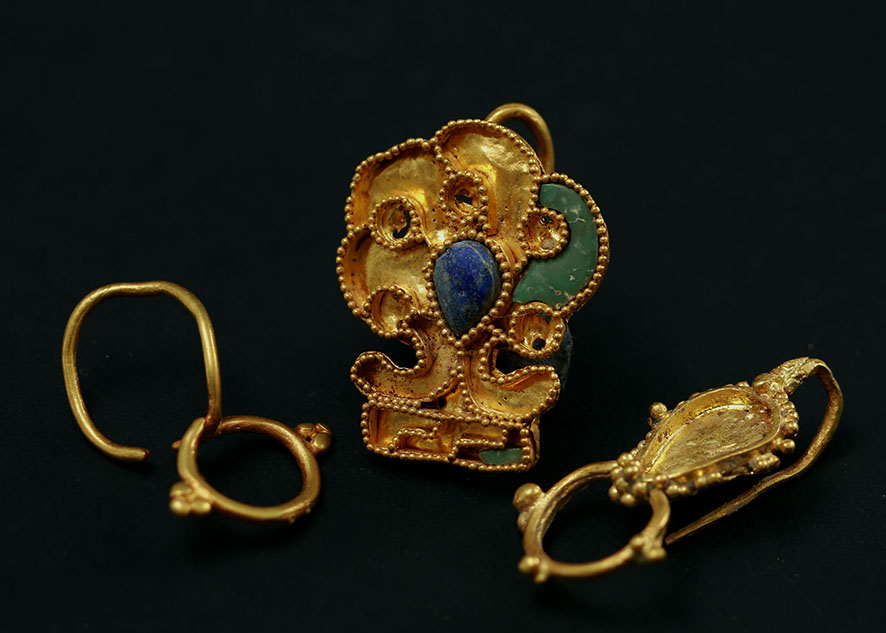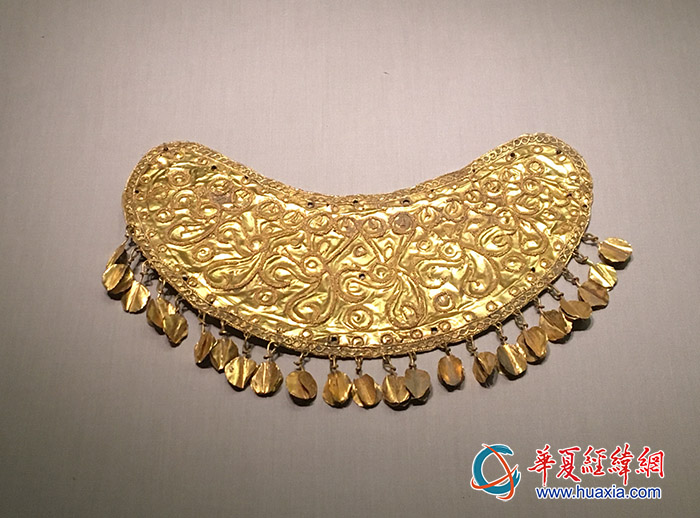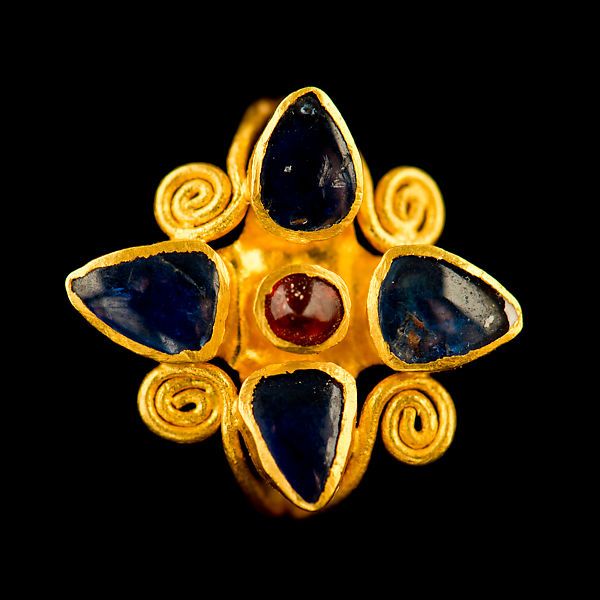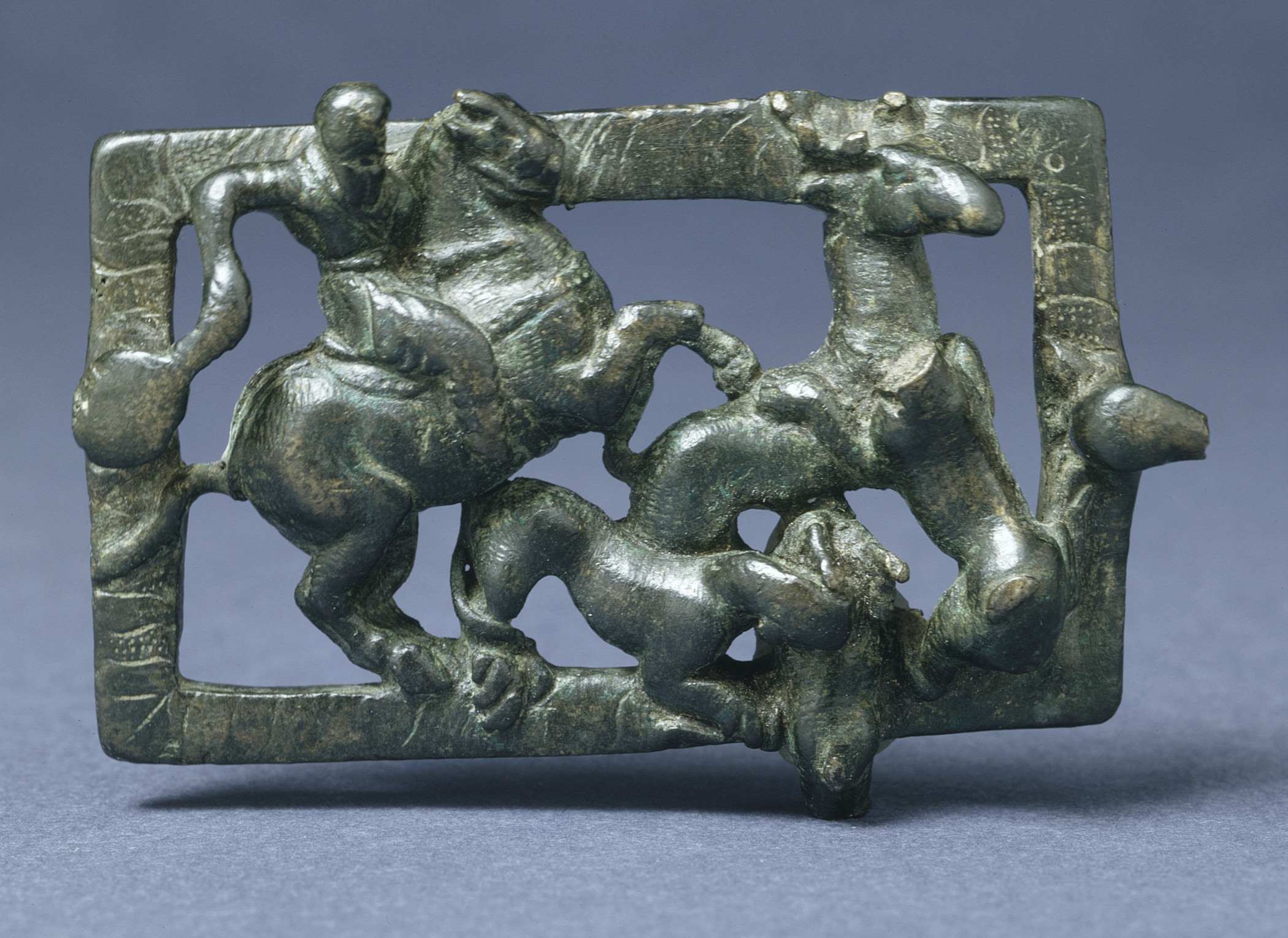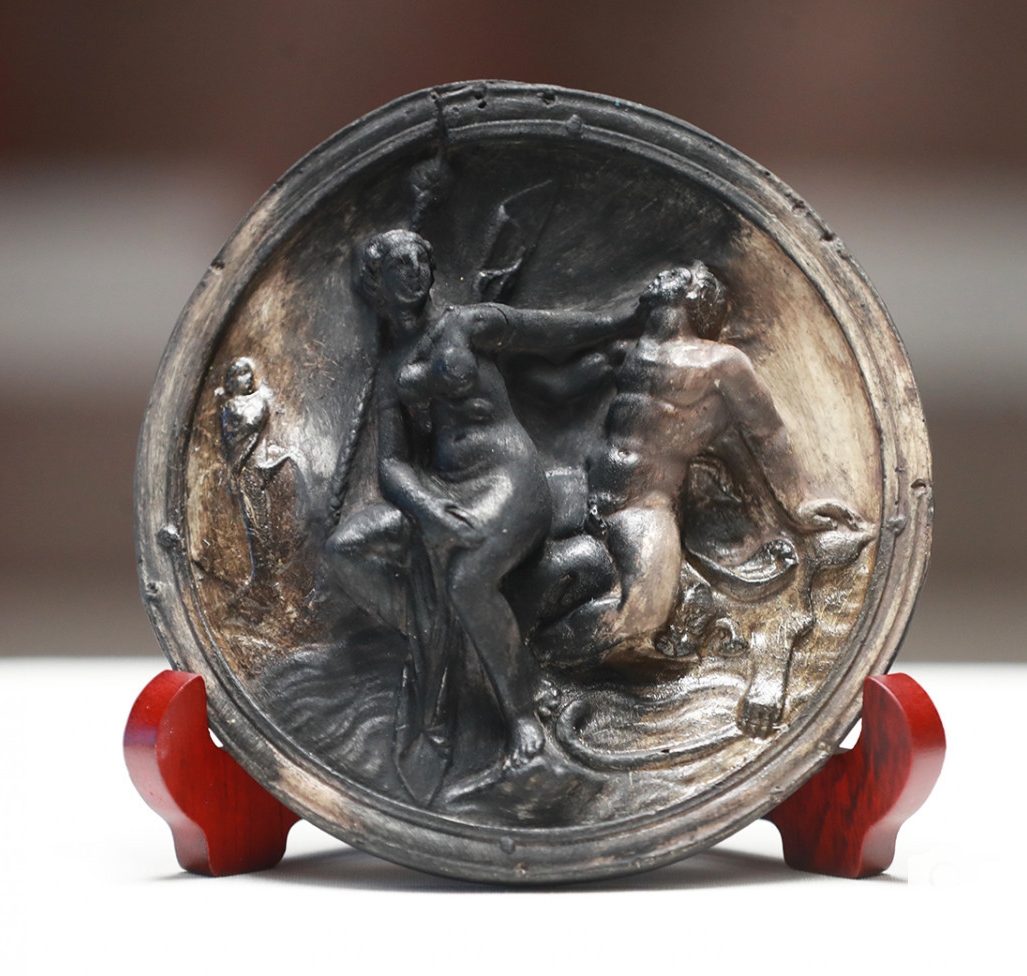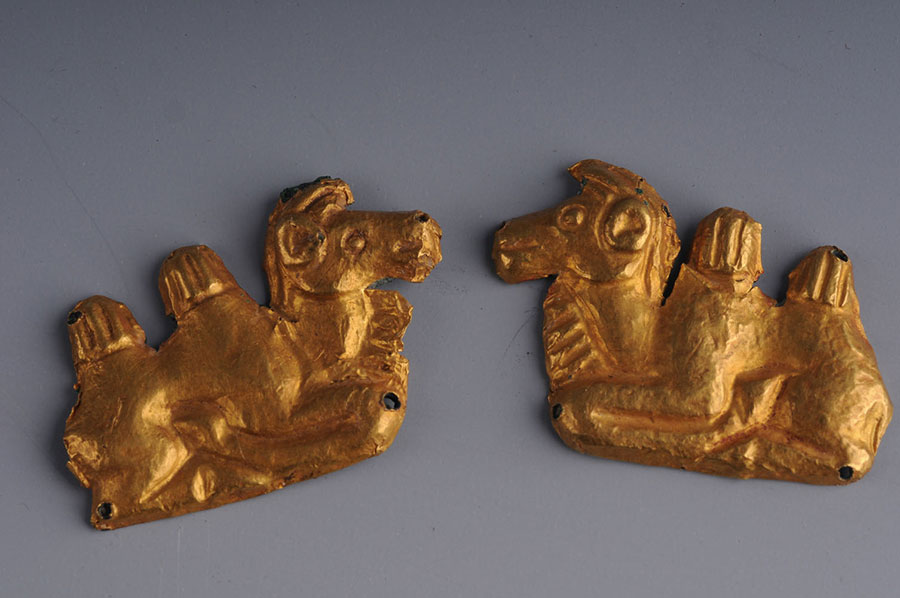Funeral site of the Xiongnu Elite at Gol Mod I, Mongolia – approximately 484 tombs have been registered, of these 3 elite tombs were excavated.
Khunnu’s aristocratic burial, 1st century Mongolia [Gantulga Jamiyan-Ombo]. Gold and turquoise ornaments excavated from the Tomb no. 20 at Gol Mod I are comparable to those found e.g. in the Tillya Tepe burial.
The polychrome style jewelry of ancient Central Asia flourished during the time of Sarmatian. [KYEONGMI JOO]
Ornaments from Gol Mod I: six in the shape of a four-petal flower, two teardrop-shaped ornaments, and three round ones. They all are made of gold, inlaid with turquoise, and are decorated with granules.
They have rivets attached to the back side, behind some of the ornaments remain pieces of a leather, it seems that they all were nailed to something, a belt for example. Ornaments are small, the flower-shaped ones are 1 x 1 cm, weight 3 g; teardrop-shaped ornaments are 0.6 x 0.9 cm, weight 1 g. [Gantulga Jamiyan-Ombo]


Among the ornaments from Gol Mod were three round ones, with diameter about 0.9 cm. Similar decorations, made of gold, inlaid with turquoise and decorated with a row of granules were found in many places among the Eurasian steppe. Gantulga Jamiyan-Ombo argues that they have the same origin.
This type of ornament was found in one of the elite Xiongnu burials at Noin-Ula, Mongolia. A miniature insert of turquoise framed in gold was an edging part of a clothing clasp in the form of a thin hollow cylinder. [N.V. Polosmak et al.]

Kurgan 22, Noin-Ula. After N.V. Polosmak et al.

Kurgan 22, Noin-Ula. After N.V. Polosmak et al.
“The unlooted remains at Tillya Tepe further evidence the copious amount of intricate ornaments that would have adorned the garments of the Inner Asian élite in Bactria, and quite possibly the remains of some individuals interred in the Mongolian square tombs, by the presence of similar ornamentation, before the coffers of the deceased were looted.” [B. K. Miller, pp. 304-305′]


Photo source https://m.blog.daum.net/turrltleo/15916560
85 scarab-type ornaments come from the female burial Tillya Tepe Tomb I, 52 round ornaments were excavated from a female burial – Tomb III.
Two hollow tubulets are soldered in the back of each ornament.

Diameter 0.6 cm. [Bactrian gold, pp. 191, 240]

Average dimensions: 1.3 x 1.1 cm, thickness 0.3-0.4 cm. [Bactrian gold, pp. 88, 228]
The coffin of the Xiongnu tomb M2 of Duurlig Nars is gold-studded with turquoise.
gold four-leaf flowers studded with turquoise from the M20 at the Noyonuul cemetery
[The Metal Road]
- RESEARCH OF ONE NORTHERN KHUNNU’S ARISTOCRATIC TOMB, Gantulga Jamiyan-Ombo https://www.academia.edu
- THE GOLD BELT BUCKLE OF NANGNANG AND CENTRAL ASIA, KYEONGMI JOO In: Civilisations of the Great Silk Road from the Past to the Future: Perspectives through Natural, Social and Human Sciences: proceedings of the International Academic Conference, Samarkand, 28-29 September 2017
ISBN: 1694-5794
[Цивилизации Великого шелкового пути из прошлого в будущее: перспективы естественных, общественных, гуманитарных наук: материалы Международной научной конференции, Самарканд, 28-29 сентября 2017 г.] https://www.unesco-iicas.org/ru/book/49 - The Xiongnu Gold from Noin-Ula (Mongolia), N.V. Polosmak, S.S. Shatskaya, M.V. Zadorozhnyy, L.P. Kundo, and E.V. Karpova DOI: 10.17746/1563-0110.2019.47.1.083-094
- The Metal Road of the Eastern Eurasian Steppe. The Formation of the Xiongnu Confederation and the Silk Road; Jianhua Yang, Huiqiu Shao, Ling Pan, 2020 https://link.springer.com
- M. Treister, Cloisonné-and champlevé-decoration in the Gold work of the Late Hellenistic-Early Imperial Periods; 2004 DOI: 10.1111/j.0065-001x.2004.00017.x
- Bactrian Gold. From the excavations of the Tillya-Tepe necropolis in Northern Afghanistan. Leningrad 1985
- “Analytical study of the manufacturing techniques of Kushan gold jewellery (National Museum of Antiquities of Tajikistan)” PDF to download >> https://journals.openedition.org
- Power Politics in the Xiongnu Empire, Bryan K. Miller, University of Pennsylvania 2009 https://core.ac.uk/download/pdf/76382562.pdf
- Xiongnu Encyclopedia; Ed. Tsagaan Turbat. Ulaanbaatar, 2013
additional literature
- The Chinese Inscription on the lacquerware Unearthed from Tomb 20, Gol Mod Ⅰ Site, Mongolia, Yeruul-Erdene Chimiddorj https://www.researchgate.net

